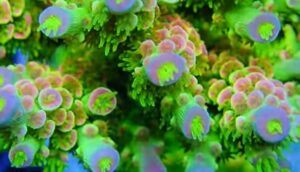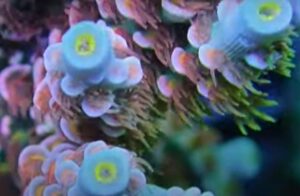Table of Contents
 What is FLUORINE (F)?
What is FLUORINE (F)?
Fluorine (F, Latin fluorum from fluorite) is a chemical element belonging to the periodic table of the so-called group of halogens*. In its free state, it is a highly poisonous gas with a pungent, chlorine-like odor. From a chemical point of view, it’s the most reactive of all the elements in the periodic table. In seawater, because of its reactivity, it occurs only in the form of fluorides (F–). In nature, however, this element occurs in various forms of minerals such as: fluorite (CaF2), fluorapatite, cryolite.
The salt content of seawater is determined by salinity. Bearing in mind that sea water consists mainly of ions such as: chlorides (Cl–), sodium (Na+), sulphates (SO42-), magnesium (Mg2+), calcium (Ca2+) and potassium (K+), all of which constitute approx. 99% of all salts in seawater, the remaining 1% cannot be ignored. Equally important for marine organisms are other components of seawater, such as: bromine, boron, strontium, or the element being covered in this article – fluorine.
Fluorine, belonging to the group of halogen elements, plays an important role in a marine aquarium, just like other elements belonging to this group (e.g. chlorine or bromine). The optimal level of fluorine in a marine aquarium is 1.2-1.4 mg/l.
The importance of fluorine in seawater
Fluorine is one of the main micronutrients in seawater, essential for corals.
The roles of fluorine
Biological processes (growth of the coral skeleton)
The main building compound of corals is calcium carbonate, in which there are inclusions of other elements. The coral skeleton is also enriched with positively charged metal cations, such as Sr2+, but it is also known that negatively charged ions (anions), such as F–, are also an important element.
Fluorine participates in the process of calcification and has a significant impact on the structure of the skeleton, especially in SPS corals. Fluorine gives the skeleton proper hardness, increases its bonding strength, and accounts for 2-4%. The fluorine compounds that are most important in the skeletal building process are sodium fluoride (NaF) and calcium fluoride (CaF2). In the literature, the calcification process is described as an ion exchange process according to the following chemical reaction (1):
CaCO3 + 2F– ⇆ CaF2 + CO32- (1)
The ion exchange reaction shows that there is a close correlation between fluoride ions (F–) and carbonates (CO32-). The level of carbonates in seawater is very important, because it also regulates the level of fluoride absorption in the coral skeleton.
Coloration of corals
Fluorine isn’t responsible for maintaining specific color in corals. However, adjusting the amount of fluorine to the content of iodine and bromine will translate into a strong fluorescent effect (mainly green and yellow) and beautiful color transitions.
Fluorine is known to enhance white color because it has a brightening effect by inhibiting the excessive growth of zooxanthellae.
In addition to the white color, it also enhances the blue taint of SPS and emphasizes the fluorescence of most corals.
Protection against parasites
Fluorine also combines with other elements, acting as a defense against parasites and inhibiting the growth of bacteria and algae.
Problems related to excess or deficiency of fluoride in seawater
Low fluorine concentration leads to slower growth of corals, low color contrast and weakening of the fluorescence effect. Fluorine is a particularly important element for Azooxanthellate corals and Acroporids. Its deficiency also translates into the health of corals, because it makes them more susceptible to the invasion of parasites. Constant deficiency of this element causes the coral skeleton to become soft, and some SPS corals may begin to slowly necrotize the tissues, which can be seen at their base.
High concentration of fluoride (above 2.2 mg/l), maintained for a long time, results in damage to coral skeletons. Excess fluorine has a negative effect on enzymes and damages bacterial films.
How to protect the aquarium?
We recommend keeping fluorine at a level of 1.2 – 1.4 mg/l, with the optimal value we recommend being 1.3 mg/l. Such a level of fluorine in seawater provides animals with health and beautiful coloring (aids light blue and red colors).
The most accurate and reliable method of determining the elemental composition of seawater is the ICP-OES (Inductively Coupled Plasma Optical Emission Spectrometry) analysis. Unfortunately, it’s not used for detection of fluorine. Determination of fluorine in seawater is possible thanks to other analytical methods, such as IC (Ion Chromatography) or ISE/HSA (Ion Selective Electrodes Headspace Analysis).
Important: Fluorine should be dosed very carefully, because its absorption into the skeleton is conditioned by the carbonate hardness of seawater. Moreover, the F/Ca ratio in seawater must be inversely proportional to pH. What does it mean? The answer is that the higher the pH of the seawater, the lower the fluorine content of the seawater must be.
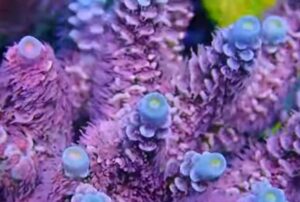
Indicators of abnormal levels of fluorine in a marine aquarium
Acropora tenuis and blue and green Montipora species such as Montipora peltiformis are very good indicators of the proper level of fluorine in seawater.
Deficiency:
- Matte coral tissue
- Colorless tops in SPS and growth edges
- Greater sensitivity to light
- Increased susceptibility to attacks by parasites, e.g. AEFW (Acropora coral-eating flatworm)
- Soft skeleton
Excess:
- Damage to bacterial films
- Skeleton damage
Recommendations
To ensure the proper level of fluorine in the aquarium, you should systematically test the water.
If the level of fluorine is above 1.4 mg/l, we’re dealing with an overdose. The most common reasons for exceeding the recommended level of fluorine: too high doses of administered fluids (check the dosing parameters on the dosing pumps). Find and eliminate the cause of the problem and lower the value of this parameter in the water. Perform up to 6 water changes. It is recommended that at each time, we replace approximately 15% of the aquarium water volume, until the recommended value of this parameter is reached. Water prepared for replacement must be characterized by an appropriate level of target salinity. Use salt with the correct parameters and composition for the ICP test.
If the level of fluorine is below 1.2 mg/l, we recommend using products containing this element to compensate for its level. To ensure a constant level of fluorine in a marine aquarium, we recommend systematic supplementation of this element, depending on the coral stock in the aquarium.
Summary
Fluorine is one of the main trace elements in seawater. It plays a significant role in marine aquariums (biological processes, protection against parasites, as well as enhancing coral coloration). The optimal level of fluoride, belonging to the group of trace elements in a marine aquarium, is 1.2-1.4 mg/l. To maintain the appropriate level of fluoride in the aquarium, it is necessary to systematically monitor it and ensure its correct level.
*The name halogens refers to the elements found in the 17th group of the periodic table.
About author

Magdalena Metzler
Privately, I am a mother and a lover of nature and sport. My main interest is quantum chemistry, which hides a whole lot of unsolved mysteries and connections, which is extremely exciting from a scientific point of view.
In my scientific career, I have conducted international projects focused on innovative solutions for many branches of business, e.g. automotive, construction, and now, of course, marine aquaristics.
Working at Reef Factory gave me a passion for marine aquaristics, which I can develop every day, building a chemistry department and creating products that will help aquarists take care of tanks and ensure the highest safety of animals. One of the most exciting memories of working at Reef Factory is the commissioning of the ICP-OES spectrometer, which analyzes the elemental composition of seawater. The method of analysis in ICP is based on an analytical technique, which is a combination of my passion for quantum chemistry and marine aquaristics.
I hope you find my articles on ReefPedia interesting and helpful! Happy reading :))

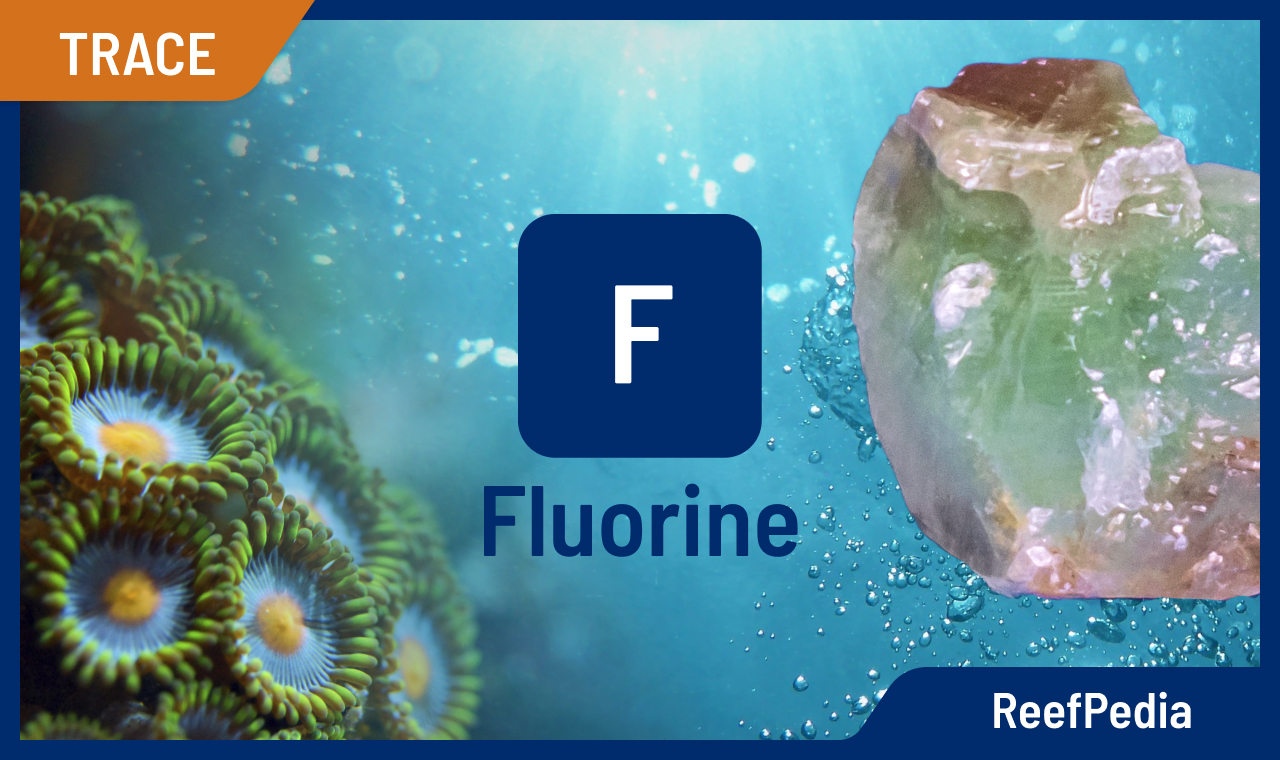
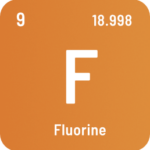 What is FLUORINE (F)?
What is FLUORINE (F)?